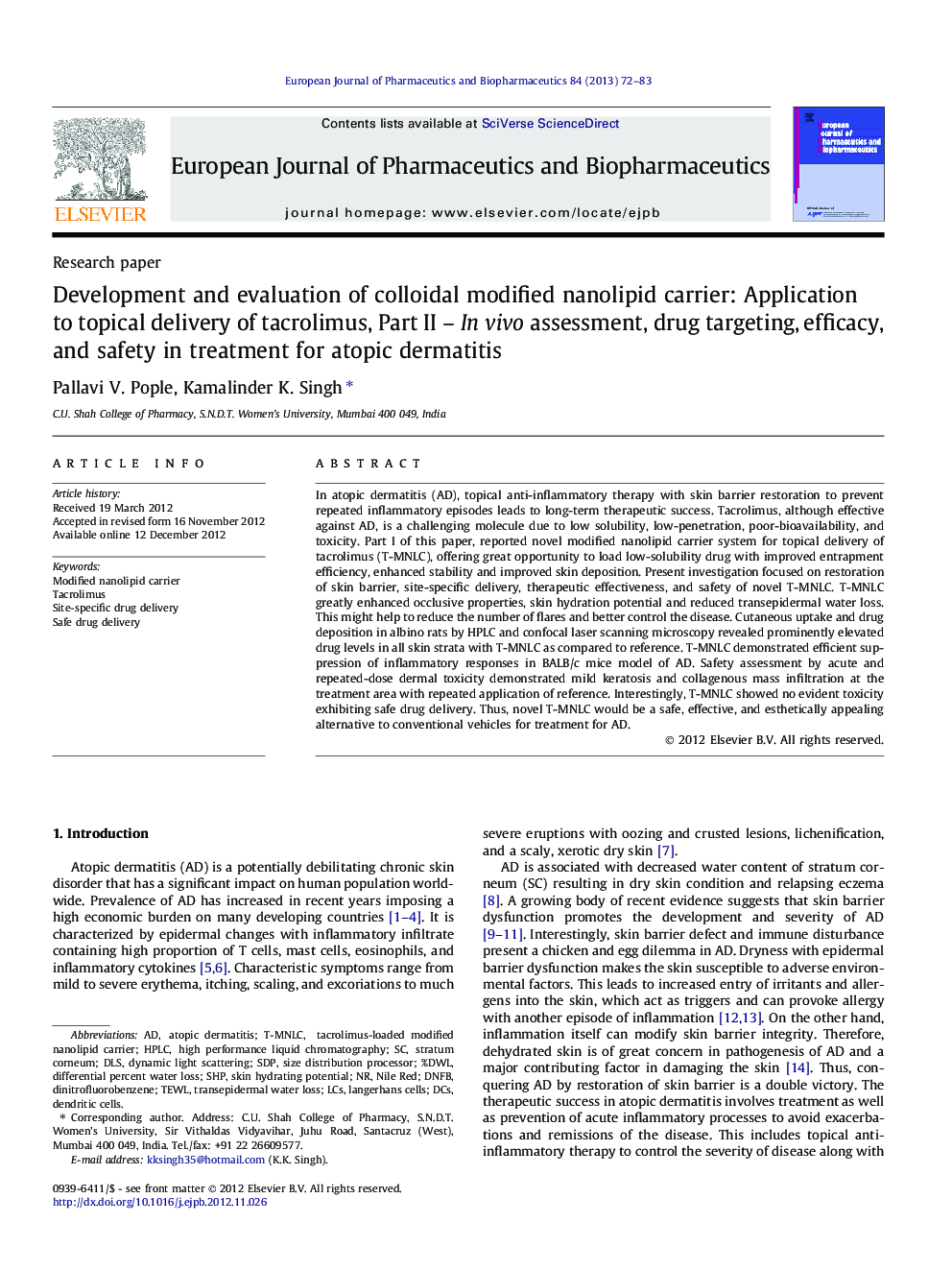| Article ID | Journal | Published Year | Pages | File Type |
|---|---|---|---|---|
| 2083913 | European Journal of Pharmaceutics and Biopharmaceutics | 2013 | 12 Pages |
In atopic dermatitis (AD), topical anti-inflammatory therapy with skin barrier restoration to prevent repeated inflammatory episodes leads to long-term therapeutic success. Tacrolimus, although effective against AD, is a challenging molecule due to low solubility, low-penetration, poor-bioavailability, and toxicity. Part I of this paper, reported novel modified nanolipid carrier system for topical delivery of tacrolimus (T-MNLC), offering great opportunity to load low-solubility drug with improved entrapment efficiency, enhanced stability and improved skin deposition. Present investigation focused on restoration of skin barrier, site-specific delivery, therapeutic effectiveness, and safety of novel T-MNLC. T-MNLC greatly enhanced occlusive properties, skin hydration potential and reduced transepidermal water loss. This might help to reduce the number of flares and better control the disease. Cutaneous uptake and drug deposition in albino rats by HPLC and confocal laser scanning microscopy revealed prominently elevated drug levels in all skin strata with T-MNLC as compared to reference. T-MNLC demonstrated efficient suppression of inflammatory responses in BALB/c mice model of AD. Safety assessment by acute and repeated-dose dermal toxicity demonstrated mild keratosis and collagenous mass infiltration at the treatment area with repeated application of reference. Interestingly, T-MNLC showed no evident toxicity exhibiting safe drug delivery. Thus, novel T-MNLC would be a safe, effective, and esthetically appealing alternative to conventional vehicles for treatment for AD.
Graphical abstractTacrolimus-loaded modified nanolipid carrier (T-MNLC) achieved long-term therapeutic success due to site-specific delivery of anti-inflammatory agent, tacrolimus and restoration of skin barrier properties by proper hydration thereby preventing repeated episodes of inflammation in atopic dermatitis.Figure optionsDownload full-size imageDownload high-quality image (149 K)Download as PowerPoint slide
